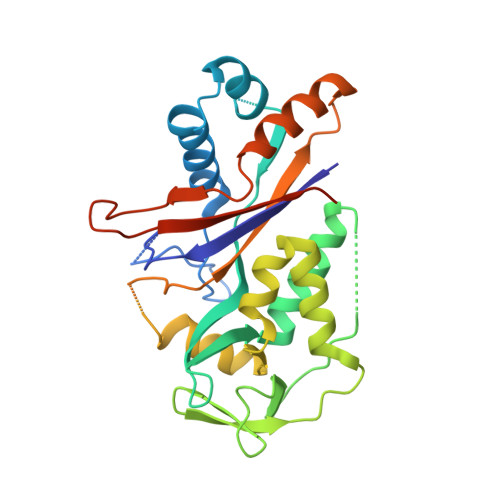Cmr4 is the slicer in the RNA-targeting Cmr CRISPR complex
Zhu, X., Ye, K.(2015) Nucleic Acids Res 43: 1257-1267
- PubMed: 25541196
- DOI: https://doi.org/10.1093/nar/gku1355
- Primary Citation of Related Structures:
4WNZ - PubMed Abstract:
Clustered regularly interspaced short palindromic repeat (CRISPR) loci and CRISPR-associated (Cas) proteins form an adaptive immune system that protects prokaryotes against plasmids and viruses. The Cmr complex, a type III-B effector complex, uses the CRISPR RNA (crRNA) as a guide to target RNA. Here, we show that the Cmr complex of Pyrococcus furiosus cleaves RNA at multiple sites that are 6 nt apart and are positioned relative to the 5'-end of the crRNA. We identified Cmr4 as the slicer and determined its crystal structure at 2.8 Å resolution. In the crystal, Cmr4 forms a helical filament that most likely reflects its structural organization in the Cmr complex. The putative active site is located at the inner surface of the filament where the guide and substrate RNA are thought to bind. The filament structure of Cmr4 accounts for multiple periodic cleavage sites on the substrate. Our study provides new insights into the structure and mechanism of the RNA-targeting Cmr complex.
- National Institute of Biological Sciences at Beijing, Beijing 102206, China Department of Biochemistry and Molecular Biology, College of Life Sciences, Beijing Normal University, Beijing 100875, China Key Laboratory of RNA Biology, Institute of Biophysics, Chinese Academy of Sciences, Beijing 100101, China.
Organizational Affiliation:
















